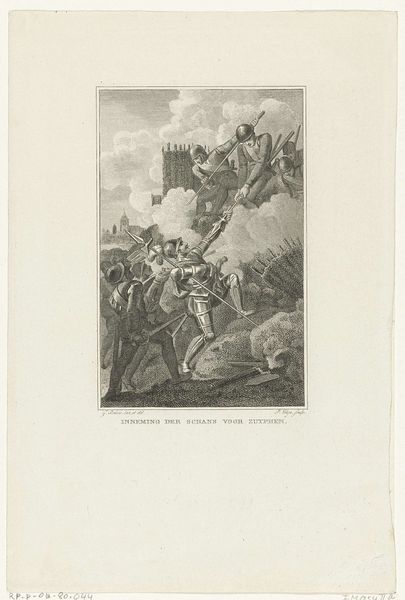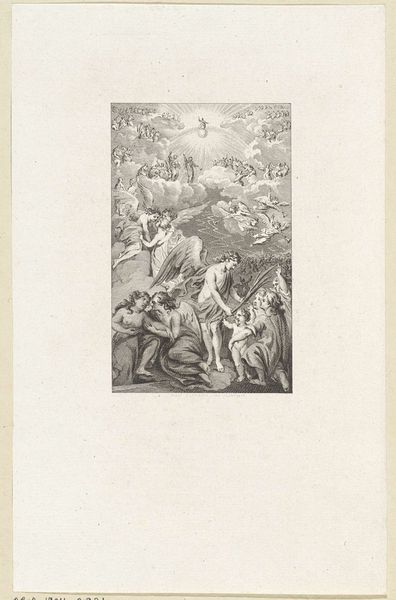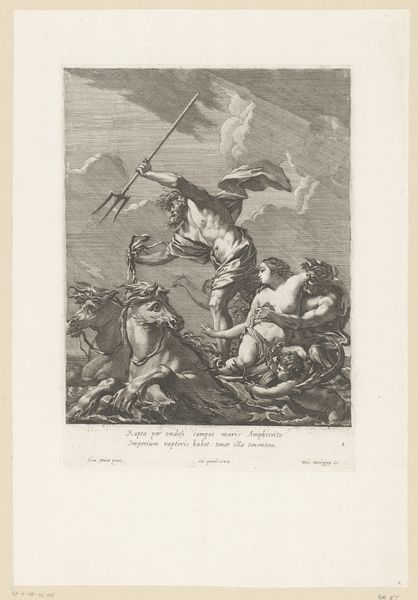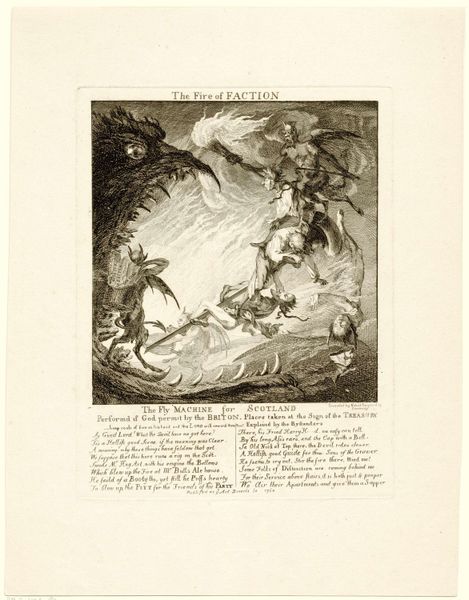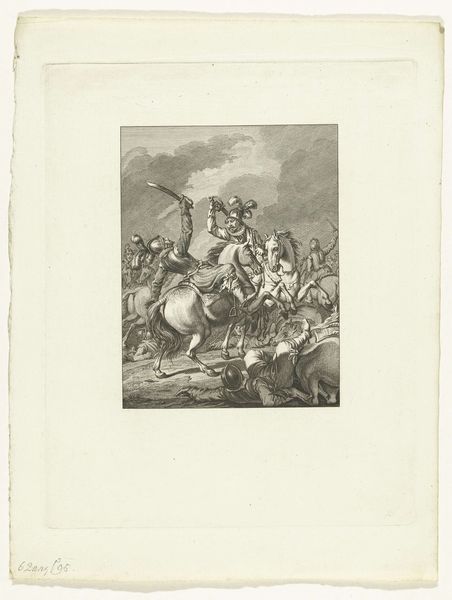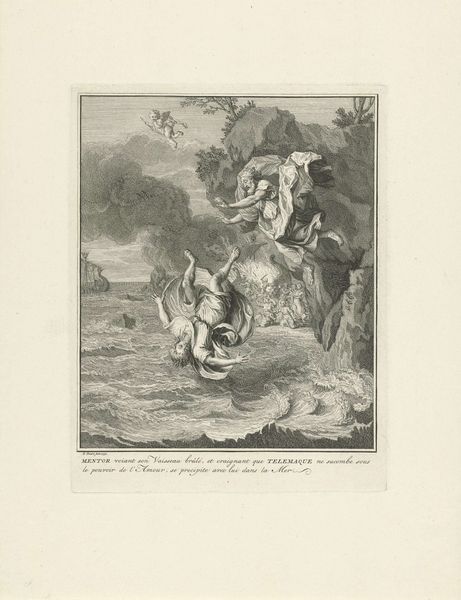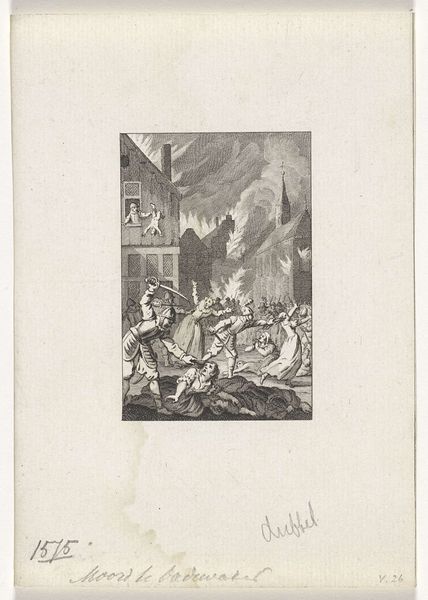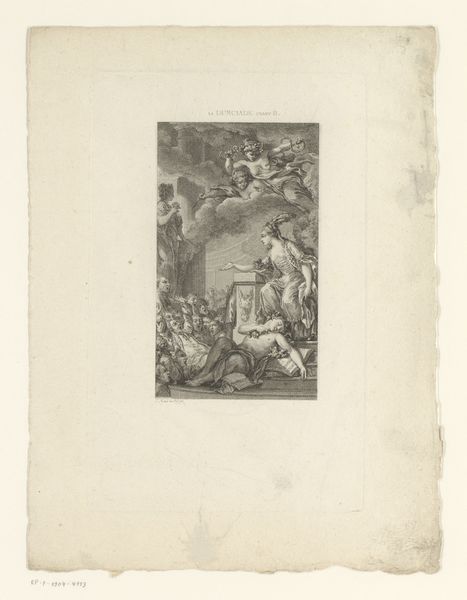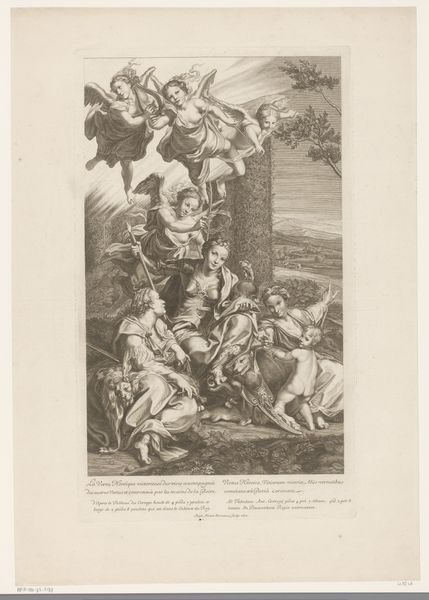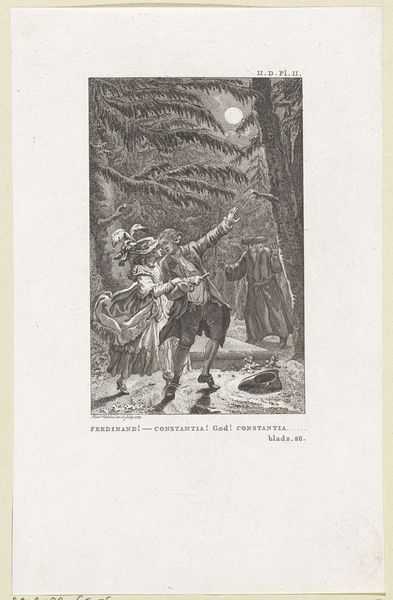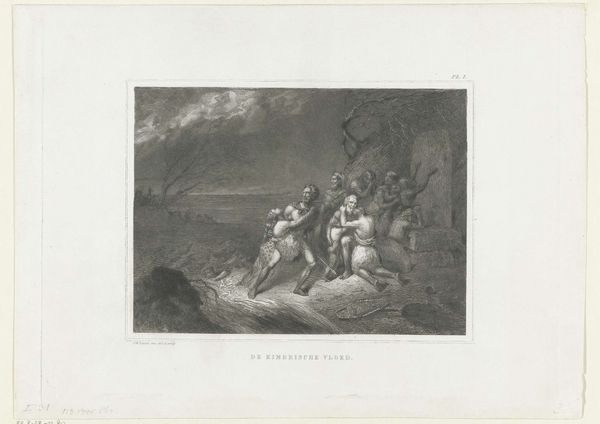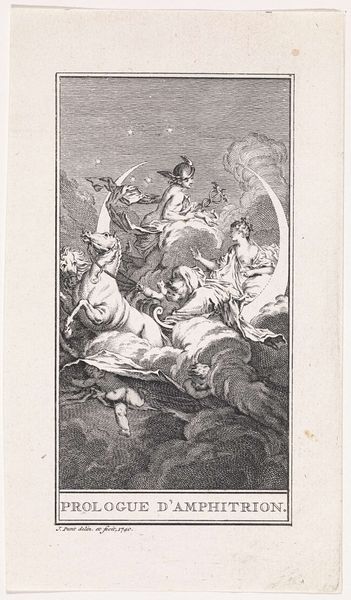
print, paper, engraving
#
narrative-art
# print
#
old engraving style
#
paper
#
history-painting
#
engraving
Dimensions: height 237 mm, width 158 mm
Copyright: Rijks Museum: Open Domain
Editor: This is *Witte de With loodst de vloot in zee, 1653*, made by Philippus Velijn between 1823 and 1829. It's an engraving on paper currently held at the Rijksmuseum. The scene looks pretty intense, all the people crowded onto the boat as the waves crash around them. What's your interpretation of the social commentary, or the visual politics within this work? Curator: The scene, indeed, is one of perceived heroic action, but consider who is represented, who is not, and *how*. The darkness and light play a crucial role here, framing the protagonists and obscuring others, subtly reinforcing the socio-political hierarchies of the time. We should question: Whose narratives are being prioritized? How does it speak to Dutch naval power and its implications on global trade and, of course, colonialism? Editor: So, you're saying we should be critical of how the artist presents this moment of apparent national pride? Curator: Exactly! Examine the body language. The central figures are rendered as stoic and assured. But what about those whose labor and lives were instrumental in achieving naval success? This composition perhaps reproduces a narrative of white, male leadership at the expense of acknowledging a wider community. Who were the anonymous sailors, shipbuilders, or even enslaved people whose contributions fueled the Dutch Golden Age? Editor: I see. It’s a romanticized, potentially problematic portrayal of history. Is it fair to assess such a historical piece with our contemporary understandings of social justice? Curator: It’s vital! We cannot ignore the historical context but must analyze artworks through an intersectional lens. This print acts as a mirror, reflecting both past beliefs and inviting current discourse around power, representation, and the responsibility of historical narratives. Editor: That gives me a lot to think about. I appreciate you contextualizing how to examine the politics of representation even in an image that seems straightforward. Curator: Precisely! Analyzing art as a reflection of power dynamics is an essential task that helps reveal untold and perhaps more uncomfortable histories.
Comments
No comments
Be the first to comment and join the conversation on the ultimate creative platform.
